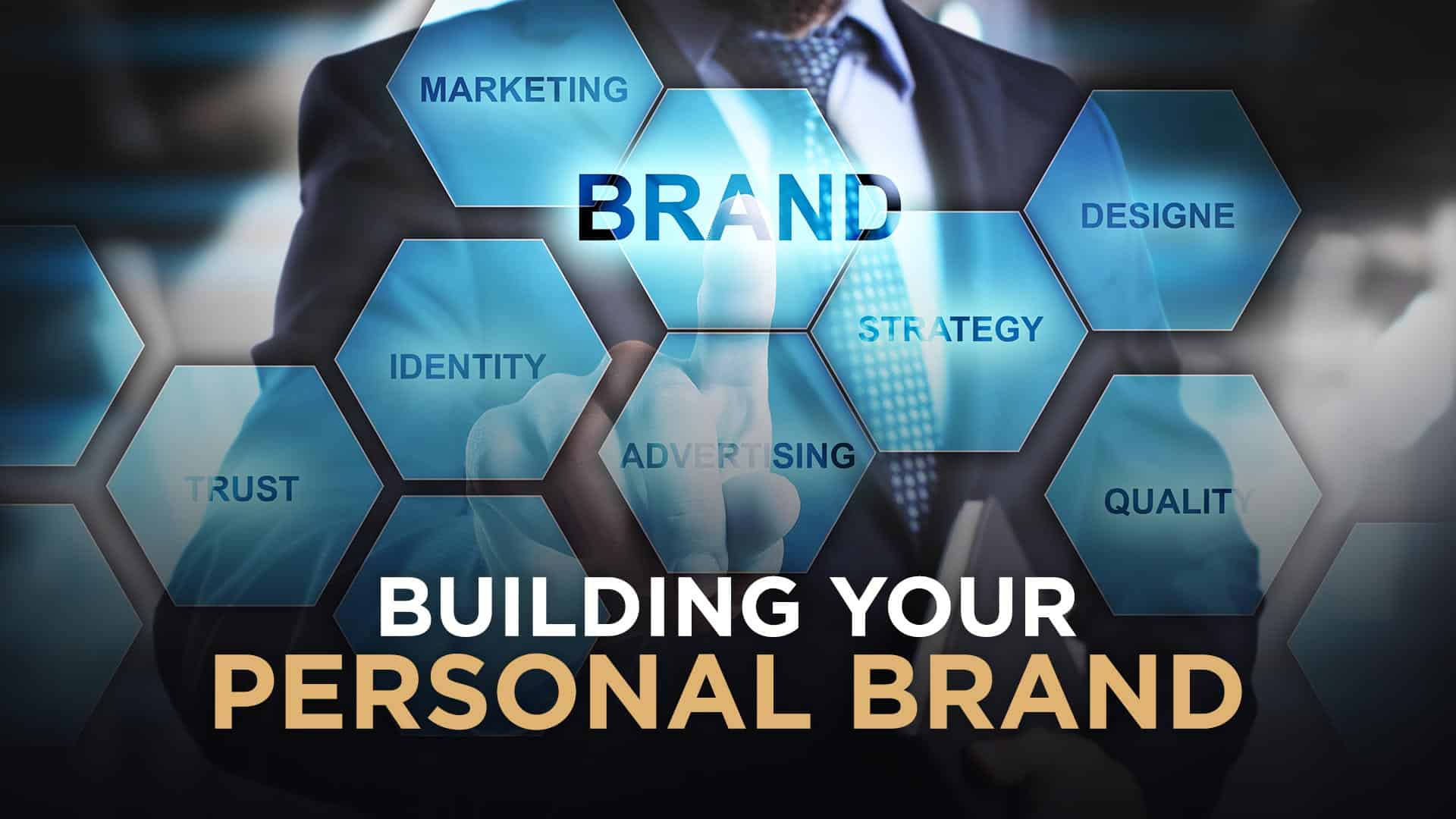Ever wondered why so many small businesses fail? Most business people and entrepreneurs focus on the operations of their business and forget to count themselves in the formula for success. If you pay close attention to successful businesses, you will notice one thing – a strong personal brand behind it. Whether it’s the executive or the business owner – there is always someone by whom people remember the business better. Building your personal brand is also what makes your business stand out.
The E-Myth Revisited by Michael Gerber is one of Dan Lok’s all-time most recommended business books. It is somewhat of a cult classic in the business world. In it, Gerber makes a bold statement that most businesses fail because the people who run them are not entrepreneurs but technicians. Being good at your craft/technical role is not the same as being an entrepreneur. What it takes is knowing how to market your business and how to connect with people.
The success of your business doesn’t depend on your knowledge and skills as much as it does on how you present yourself and your business. A technician has the knowledge and skills in a specific area. An entrepreneur is a technician who also knows how to present himself or herself to earn client trust. It all has to do with personal branding.
In this article, we will share 7 steps for building your personal brand. If you are ready to build a strong business and never wonder what people say about you when you’re not in the room – read on.
What’s a Personal Brand?
Before we move into details of building your personal brand, let’s first clarify what a personal brand is. You see, the mistake entrepreneurs make is that they think that their business brand is more important than their personal brand. But this couldn’t be more wrong.
What people think about you has everything to do with your business. If people like you and have positive associations with the mention of your name, your business is doing well. You see – your personal brand is the public projection of everything about you, including your business. It’s a projection of your personality, skills, and values.
People make conclusions about others based on first impressions. What you wear and how you walk and talk all determine what people think about you. The key is that the personal brand is not a person. It is just a projection of perceptions people have of you. Very few people actually know you, but they know your brand. They have a rough idea of your personality and values.
So what is personal branding then? It is actually the process of creating a unique personal identity around a leading attribute. It’s about managing the perception of your audience to create a certain feeling and impression of who you are.
“Your brand is what people say about you when you’re not in the room.” Jeff Bezos, Amazon founder Share on XThe good news, though, is that you can take steps to manage those perceptions by being mindful of the impressions you make. A great personal brand will pre-sell people to your business by making them aware of your character and strengths before they ever meet you.
Here are 7 steps you can take now to start building your personal brand.
#1: Get clarity around building your personal brand.

What do you want to be known as? The last thing you want is to appear as ‘just another’ person in the same business. What do we mean? You do not want to be another mortgage broker, another real estate agent, another web designer, another…anything. You want to be unique. Be known as something different and special.
When Dan Lok first started his career as a copywriter, he gave himself a unique name. Dan came up with a strategy to call himself the “whiz kid of copywriting.” He was so young, and he knew that people might hold that against him. Business owners could decide not to take him seriously because of his youth. But he used this disadvantage of age as an advantage for himself.
Later on, he realized that his name is not easily remembered. His Chinese name was preventing him from networking and landing clients. This is when he decided to change his name to Dan Lok. The moment he did this, he got more clients, and he became more confident as well.
So think about it – how do you want to be perceived? As a strong and decisive leader? An innovator? A low-key, thoughtful, silent power—or as a charismatic and energetic catalyst for change? Brands are built based on the attributes used to describe them: authentic, charismatic, focused, influential, passionate, strong. What brand attributes best reflect you?
Never wait for others to call you what you want to be. Never wait for others to refer to you as an expert. If you want to be the best - make the claim that you’re the best. - Dan Lok Share on XThis will allow you to be the expert in your field because others will perceive you as such.
#2: Understand how you are currently perceived.

So, what are people saying about you when you leave the room? Do you know? How can you find out?
While you may not currently be aware of it, you have a personal brand already. The problem is that you’re unaware of what it is. You need to find out.
How? By asking others. You could ask trusted friends or colleagues, customers, and clients. You could also do a little digging online to see what kind of comments others make about you. What kind of language do they use when they talk about you? What results do you get when you Google your own name? Or your business name?
There are plenty of ways to gain insight into how you’re currently perceived. It’s a critical step to take in building your personal brand. For instance, you might take the list of brand attributes you selected to define your desired personal brand and ask your own group of personal advisors to rate you on each of these on a scale of one to ten. Where would you fall on a scale of one to ten based on the attributes you’ve selected?
Once you gather this input, you’re likely to find some gaps. Look at your score and compare it to what you wish the perception of you was. How can you improve these scores? By identifying the various opportunities that others have to form impressions of you, you can implement changes to match the perception with the vision. Consider these opportunities—or brand touchpoints— and think about how they can serve you better.
#3: Conduct a personal brand audit.

Now that you know that your perception doesn’t match your desired brand, you can fix it. That’s the good news. The most important step to take is to analyze the signals you send which contribute to your perception.
Think about the following questions:
- Are you firm and decisive when meeting with business associates, or do you wait for them to lead the conversation and share their ideas?
- Do you speak up confidently in business settings, or do you hang back, waiting for others to speak?
- Do you forge ahead when making decisions, or do you vacillate and come across as indecisive?
- How do your nonverbal signals support, or detract from your desired image?
Now, when you think about these questions and answer them, think about opportunities for change. What can you do to change the way you’re perceived?
#4: Make some changes.

Marketers talk about ‘living the brand promise.’ But what does that mean? Well, that means that you need to stay true to what you project. Everything you do needs to be consistent with the perception you create and the experience your audience has engaging with your brand.
If your brand audit reveals some gaps between how you’re perceived and how you want to be perceived, you need to make changes. And you need to make those changes before you start aggressively interacting with others. If you don’t, you won’t be living your brand promise.
This process will take time and effort. But it’s time and effort well spent. Think carefully about your interactions with people across all online platforms. Is the experience they have consistent across the board? Do you send the same message?
Be bold with this step too and dare to make whatever change necessary. Remember that Dan Lok changed his name to build his brand. He often tells his students this story. Dan realized quickly that his Chinese name is hard for people to pronounce and remember. Since his goal was to build a successful business, he knew he needed a name that’s easier to remember. This is when he changed it to Daniel.
However, after a few years, he realized that name isn’t the right fit either. One day, he asked his mentor – What do you think about Dan Lok? His mentor was surprised at first, but then he smiled – Dan is a much better fit. He said – it sounded more straightforward and approachable – it sends a better message. And that is how Dan Lok brand name was born.
A recent Forbes article included feedback on personal branding from 16 members of the Young Entrepreneur Council (YEC) about changing your personal branding. Many suggest that letting in your followers and clients on the changes you and your brand are going through is a good strategy as well. Use the transition to your advantage and give everyone a little behind the scenes. This will increase their trust in your brand as well and give them a sense that they know you better.
#5: Maintain alignment across all touchpoints all of the time.
Now, just as Dan thought carefully about his name, you should think about every change you make. Keep in mind that your personal brand has to be consistent across all platforms. If your attire screams Dolce & Gabbana, but you drive an old used car, there’s a disconnect. If you’re committed to building a reputation as a fierce negotiator, but you capitulate immediately to even minor demands, there’s a disconnect.
To establish a strong personal brand, you need to convey consistent signals across every touchpoint others may encounter. But ensuring alignment requires mindfulness and attention to detail. This isn’t an easy task. It will require difficult personal decisions and potential sacrifices. Why? Because the strategies that got you to where you are today, will not get you to where you want to go.
Think from the standpoint of where you want to be and plan your communication and branding accordingly. Take your followers and clients and customers on a journey through your brand development. Along the way, you can share your personality and provide value. This will make them trust you and your personal brand will seem genuine.
Make sure you have a good connection between your personal and business trend by taking some of the additional steps recommended by Forbes: read and approve social media content, ask for feedback, specialize on commonalities, focus on foundations, stay consistent, model your company values, let your actions speak for you.
If you’re like most people, you want a friend who is reliable and with whom you simply “click.” Disney and Omnicom share that “consumers across all generations want and expect the same things from brands as they do of their friends and family — reliability, authenticity, and the feeling like the brands ‘get’ them.” Being consistent and connecting your personal and business brand show that you live your values and that people can count on you.
#6: Create your elevator pitch.
An elevator pitch, or elevator speech, is a message you can deliver in about the time it would take to ride up or down in an elevator—about 20 to 60 seconds. The elevator pitch you create for building your personal brand should be a response to the question: “What do you do?”
Being asked this question gives you the opportunity to share your personal brand by succinctly and precisely stating what it is. The elements of your elevator speech should include:
- Who are you?
- What you and your company do?
- The value of what you do for your target audience
A not-so-good elevator pitch would go something like this: “I’m Chris Jones. I own a software company.”
A better pitch would go something like this: “I’m Chris Jones. My company ABC Software offers turnkey order processing solutions to online retailers.”
An exceptional pitch would sound like this: “I’m Chris Jones—I’m changing the way online retailers interact with their audiences by offering the best, and most seamless, order processing solution through my multi-billion-dollar company, ABC Software.”
You’re more than a business owner. You’re a visionary, a fierce leader. Your elevator speech should make this abundantly—and immediately—clear. So should all of the other messages you’re sending across a wide range of potential channels.
#7: Spread the Word

You’re aligned, locked, and loaded. Now, you’re ready to spread the word through as many channels—personal, traditional, and digital—as you possibly can. You want to achieve the power of omnipresence—the ability to be present everywhere.
Think about it – who is going to get their message out more effectively? Someone who is shy or someone who is outgoing? A withdrawn person or someone who is engaged? Someone who blends in with the competition or someone who stands out?
The goal is to stand out in meaningful and aligned ways through as many touchpoints as possible, so your brand begins to build and grow and support the attributes you’ve selected. Tell your story so you can shape how people view you and enable consumers to begin forging a connection with you and your company.
Every encounter. Each impression. Every touchpoint that your audience comes across sends a message. Together these encounters create impressions that drive your personal brand. Be bold and authentic. Do not be afraid to share yourself and your vision. The bolder you are the more attention you will receive. Keep in mind this research – consumers need to see your brand five to seven times to remember it.
Remember Dan Lok and his red suit? Yes – be that bold and that loud.
A few final thoughts…
What are people saying about you when you leave the room? This is the question you, as an entrepreneur and business owner, must know an answer to. If you are not sure – your brand is in trouble. If you do not know what they say behind your back – do your research.
When you’re clear on your vision and mission, make sure to analyze all your touchpoints with people. Are you projecting what you want to project? Are they getting the right message? The best way to build a strong personal brand is to work with people who already did it.
To help entrepreneurs build the best personal brand, Dan Lok has put together an advisory board for elite entrepreneurs. If you’re ready to make your business to the next level, then this might be the mastermind group for you.
Act now to start a journey that will help you earn a position among the most elite entrepreneurs in the world. Become part of the Dragon 100™.



